 |
SRGC Bulb Log Diary |
| Home Recommend This Site To A Friend |
|
BULB LOG 13 28th March 2003
Do you remember the poor frozen and collapsed Arum creticum that I showed in an earlier log (2 & 3), then it defrosted and sat up. Well the poor thing went through this same process a few times over the past three months but as you can see it does no lasting harm to the plant.
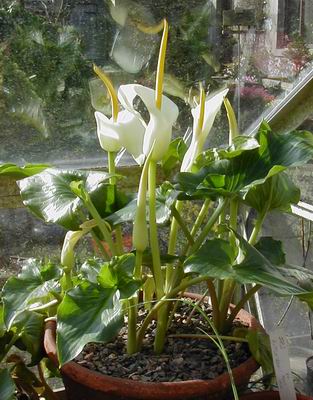
Arum creticum flowers Another plant suffered the same conditions last week when I left a pot of Fritillaria raddeana out all night. I have often heard people say that this plant is subject to being damaged by frosts. 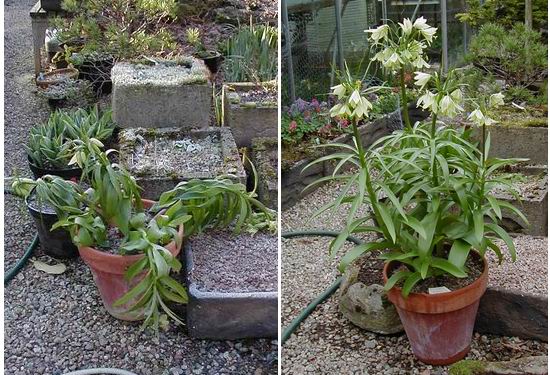
Frit raddeana x2 On the left the plant has collapsed, just like the Arum, having been subjected to a -4C frost but later in the day it sat up again and a week later it is looking beautiful. We are approaching peak time in the Frit house and I will be able to show you just a few each week or the log will use up the entire web site. 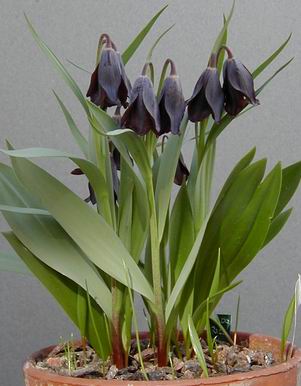
Frit armena Frit armena is quite variable within a narrow range. It is always has brown flowers and it is usually fairly short although we do have some taller ones that are approaching Frit caucasica in stature. This is my favourite form of the ones that we grow. It is slightly taller than usual this year, as are most of our bulbs due to the milder than usual temperatures attracting them into growth when the light levels are even poorer than a normal year. ( Any body know what a normal year is? ) It produces small rice grain type offsets as well as seed. Another brown Frit which has everything going for it including, unusually for frits, a wonderful scent is F. obliqua. 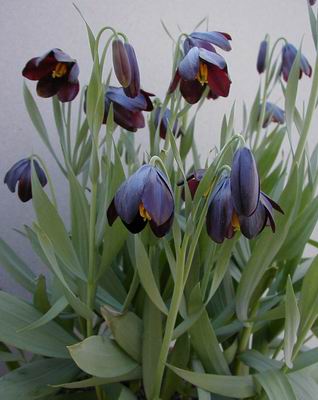
F. obliqua I am told that this plant is under severe threat in the wild due to habitat destruction, it would be a great shame if it were to be lost in the wild. It sets plenty of seed for us and if it is growing well makes a small offset bulbs as well so its future in cultivation should be secure. Some years ago when a pot of Frit. kotschyana seedlings started to flower one stood out from the others. It was green where the rest were the typical brown expected from this species and it was much more vigorous in both growth and the number of offsets that it produced so we selected it out and called it Fritillaria kotschyana 'Craigton Max'. 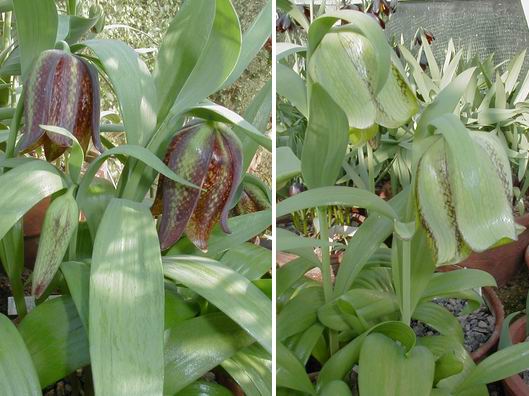
Frit kotschyana & 'Craigton Max' Craigton Max has also set seed and it will be interesting to compare its offspring with those from its siblings when they flower in a few years time. 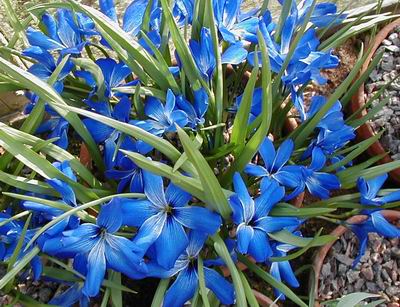
Tecophilaea cyanocrocus Tecophilaea are also in full bloom just now and we grow the whole range from the stunning blue cyanocrocus through to almost pure white forms that we have been selecting from generations of Tecophilaea leichtlinii. We are now on the second generation of seedlings and are eagerly awaiting generation three to flower in another year or two. If you want a good seed set you are best to pollinate the flowers with a small fine haired paint brush by pushing it into the centre of the flower and rotating it a few times this will greatly increase the chance of seed. 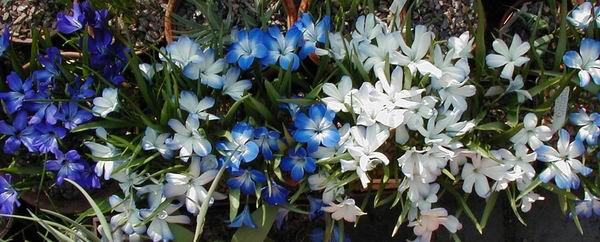
Tecophilaea selections Not only are Tecophilaea among the most beautiful of bulbs but they also have a most beautiful scent that wafts out of the bulb house on a warm day. In the garden the erythronium are coming into their own as we see two colour forms of E. dens canis enjoying the sunshine. 
Erythronium dens-canis x2 I especially love the white forms. Erythronioum hendersonii has a stunning colour combination with that black current throat. 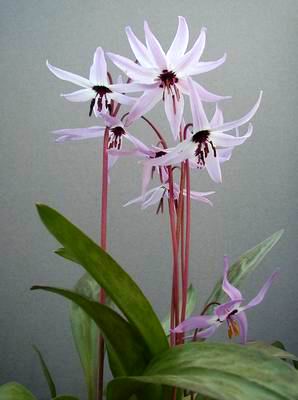
Erythronioum hendersonii This is growing in a pot and was photographed in my portable studio which consists of three bits of plywood fixed together with duct tape so that it stands up forming a back and two sides. On the inside of the back I have 18% gray card which is the perfect photographic background and the two sides are white to reflect the light. 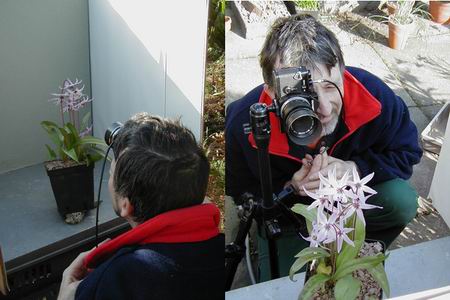
Taking picture ^ back to the top ^ |